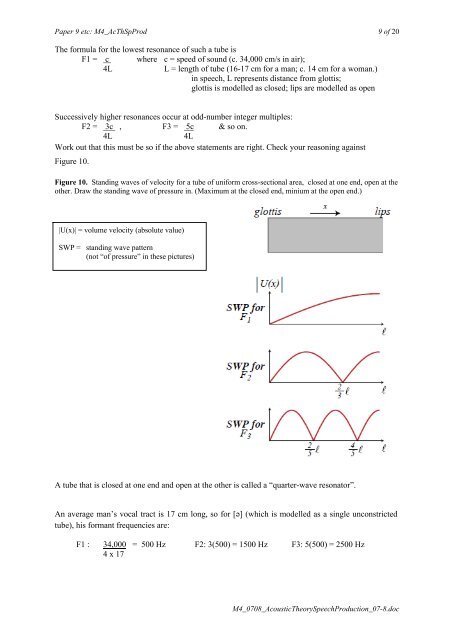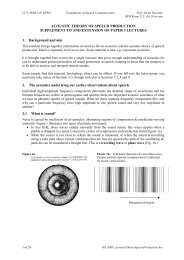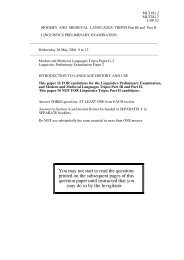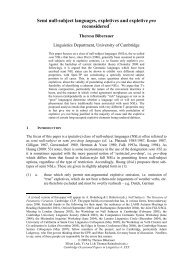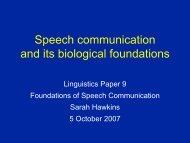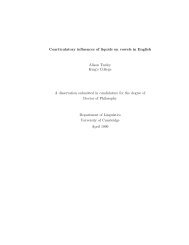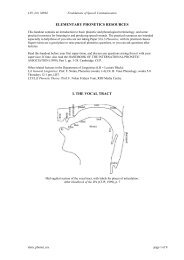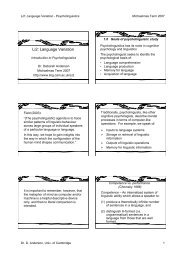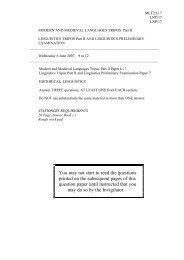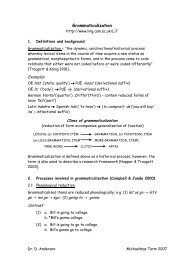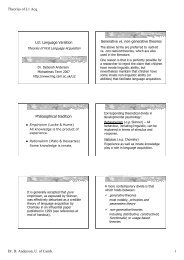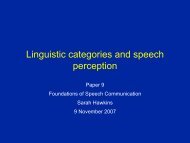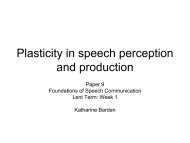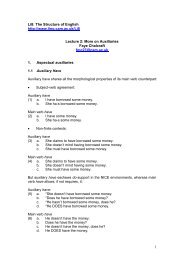ACOUSTIC THEORY OF SPEECH PRODUCTION ... - Ling.cam.ac.uk
ACOUSTIC THEORY OF SPEECH PRODUCTION ... - Ling.cam.ac.uk
ACOUSTIC THEORY OF SPEECH PRODUCTION ... - Ling.cam.ac.uk
Create successful ePaper yourself
Turn your PDF publications into a flip-book with our unique Google optimized e-Paper software.
Paper 9 etc: M4_AcThSpProd 9 of 20<br />
The formula for the lowest resonance of such a tube is<br />
F1 = c where c = speed of sound (c. 34,000 cm/s in air);<br />
4L<br />
L = length of tube (16-17 cm for a man; c. 14 cm for a woman.)<br />
in speech, L represents distance from glottis;<br />
glottis is modelled as closed; lips are modelled as open<br />
Successively higher resonances occur at odd-number integer multiples:<br />
F2 = 3c , F3 = 5c & so on.<br />
4L<br />
4L<br />
Work out that this must be so if the above statements are right. Check your reasoning against<br />
Figure 10.<br />
Figure 10. Standing waves of velocity for a tube of uniform cross-sectional area, closed at one end, open at the<br />
other. Draw the standing wave of pressure in. (Maximum at the closed end, minium at the open end.)<br />
|U(x)| = volume velocity (absolute value)<br />
SWP = standing wave pattern<br />
(not “of pressure” in these pictures)<br />
A tube that is closed at one end and open at the other is called a “quarter-wave resonator”.<br />
An average man’s vocal tr<strong>ac</strong>t is 17 cm long, so for [´] (which is modelled as a single unconstricted<br />
tube), his formant frequencies are:<br />
F1 : 34,000 = 500 Hz F2: 3(500) = 1500 Hz F3: 5(500) = 2500 Hz<br />
4 x 17<br />
M4_0708_AcousticTheorySpeechProduction_07-8.doc


